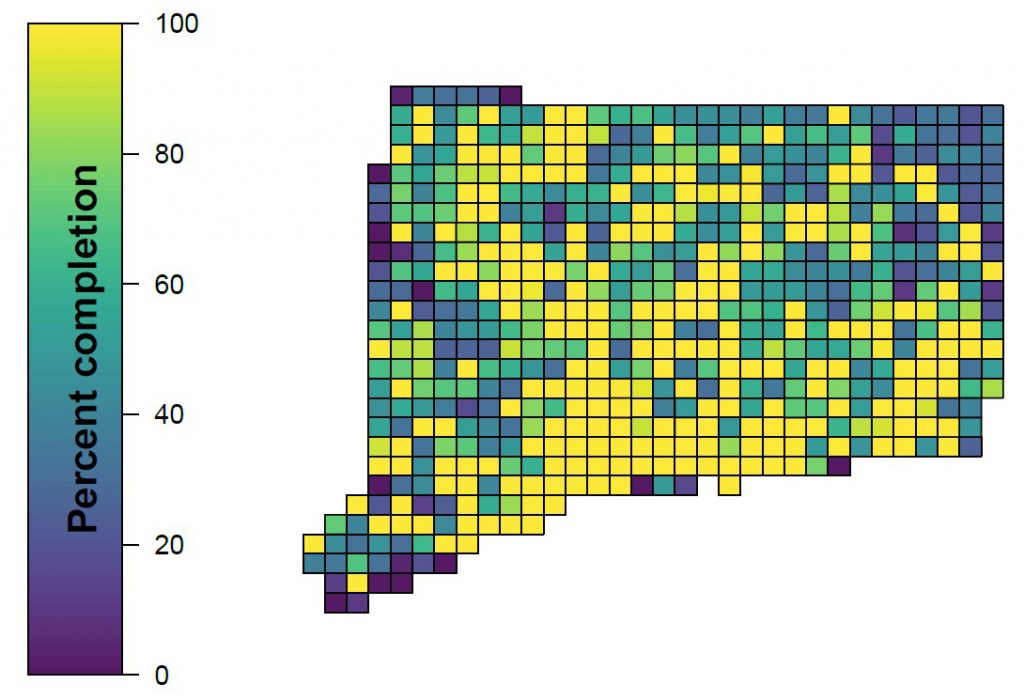With the end of the year comes the end of Early Winter data collection for the atlas. There’s still a little time, for owls at least, but now it’s just a matter of sharing any lingering eBird checklists or mailing in data forms so that we can wrap things up for that, penultimate, portion of the project.
Two months ago, we still had lots of gaping holes in our attempt to get a decent number of surveys in every block. Thanks to the great efforts of many people, and the truly exceptional efforts of a distinct few, we’ve managed to fill most of those gaps and will end the atlas with a impressive statewide sampling of Connecticut’s early winter birds.
Now, we need to do the same for the late winter. Continue reading “Two months of atlas field work left”

 Blocks that have received less than 3 hours of surveying during the early winter period (Nov-Dec) are the highest priority for visits before the new year.
Blocks that have received less than 3 hours of surveying during the early winter period (Nov-Dec) are the highest priority for visits before the new year.